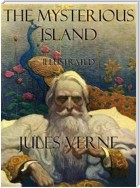Jules Verne

Jules Gabriel Verne (French pronunciation: [ʒyl vɛʁn]; February 8, 1828 – March 24, 1905) was a French author who pioneered the science fiction genre. He is best known for his novels Twenty Thousand Leagues Under the Sea (1870), A Journey to the Center of the Earth (1864), and Around the World in Eighty Days (1873). Verne wrote about space, air, and underwater travels before air travel and practical submarines were invented, and before practical means of space travel had been devised. He is the second most translated author in the world (after Agatha Christie). Some of his books have also been made into live-action and animated films and television shows. Verne is often referred to as the "Father of Science Fiction", a title sometimes shared with Hugo Gernsback and H. G. Wells.
Jules Verne was born in Nantes, in France, to Pierre Verne, an attorney, and his wife, Sophie Allote de la Fuÿe. Jules spent his early years at home with his parents in the bustling harbor city of Nantes. The family spent summers in a country house just outside the city, in Brains on the banks of the Loire River. Here Jules and his brother Paul would often rent a boat for one franc a day. The sight of the many ships navigating the river sparked Jules's imagination, as he describes in the autobiographical short story "Souvenirs d'Enfance et de Jeunesse". At the age of nine, Jules and Paul, of whom he was very fond, were sent to boarding school at the Saint Donatien College (Petit séminaire de Saint-Donatien). As a child, he developed a great interest in travel and exploration, a passion he showed as a writer of adventure stories and science fiction. His interest in writing often cost him progress in other subjects. At the boarding school, Verne studied Latin, which he used in his short story "Le Mariage de Monsieur Anselme des Tilleuls" in the mid 1850s. One of his teachers may have been the French inventor Brutus de Villeroi, professor of drawing and mathematics at the college in 1842, and who later became famous for creating the US Navy's first submarine, the USS Alligator. De Villeroi may have inspired Verne's conceptual design for the Nautilus in Twenty Thousand Leagues Under the Sea, although no direct exchanges between the two men have been recorded. Verne's second French biographer, his grand-niece Marguerite Allotte de la Fuÿe, formulated the rumor that Verne was so fascinated with adventure at an early age that he stowed away on a ship bound for the West Indies, but that Jules's voyage was cut short when he found his father waiting for him at the next port.
 čeština
čeština Deutsch
Deutsch français
français magyar
magyar polski
polski русский
русский English
English Azərbaycan
Azərbaycan беларуская
беларуская italiano
italiano ქართული
ქართული қазақ
қазақ Nederlands
Nederlands português
português slovenčina
slovenčina español
español 中文
中文



























